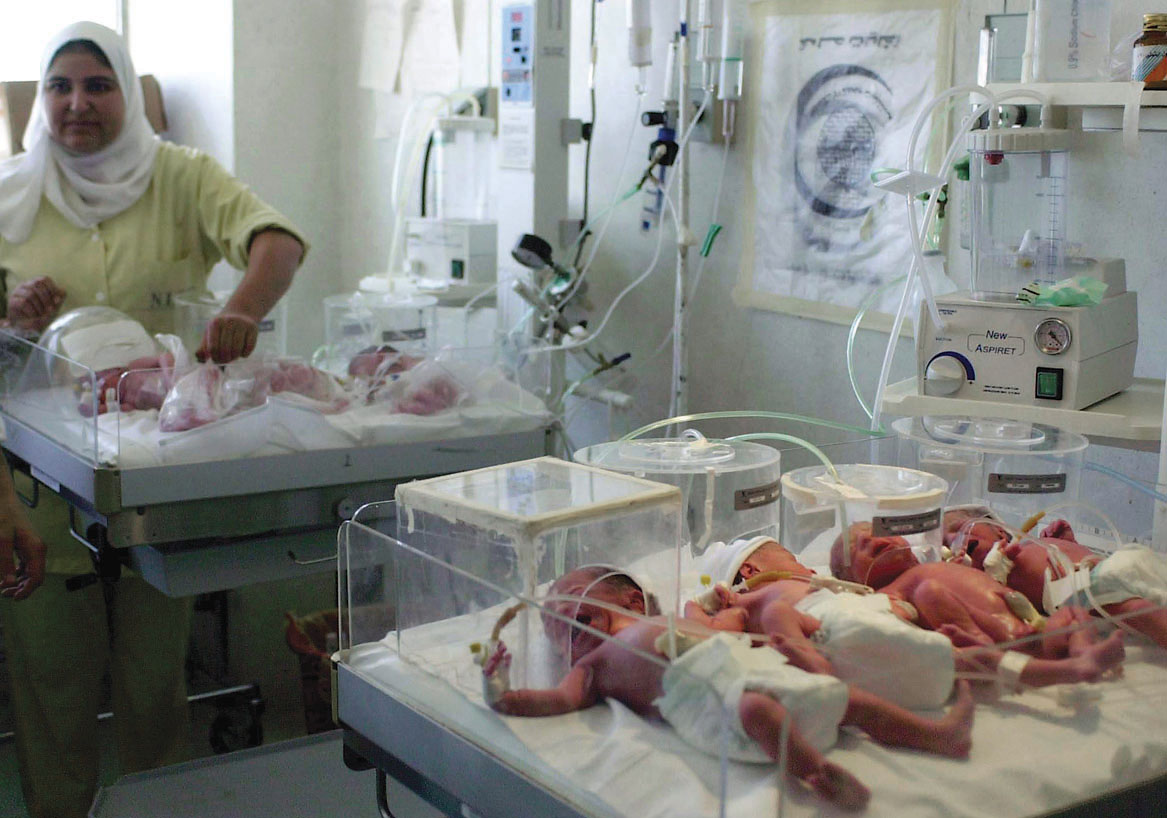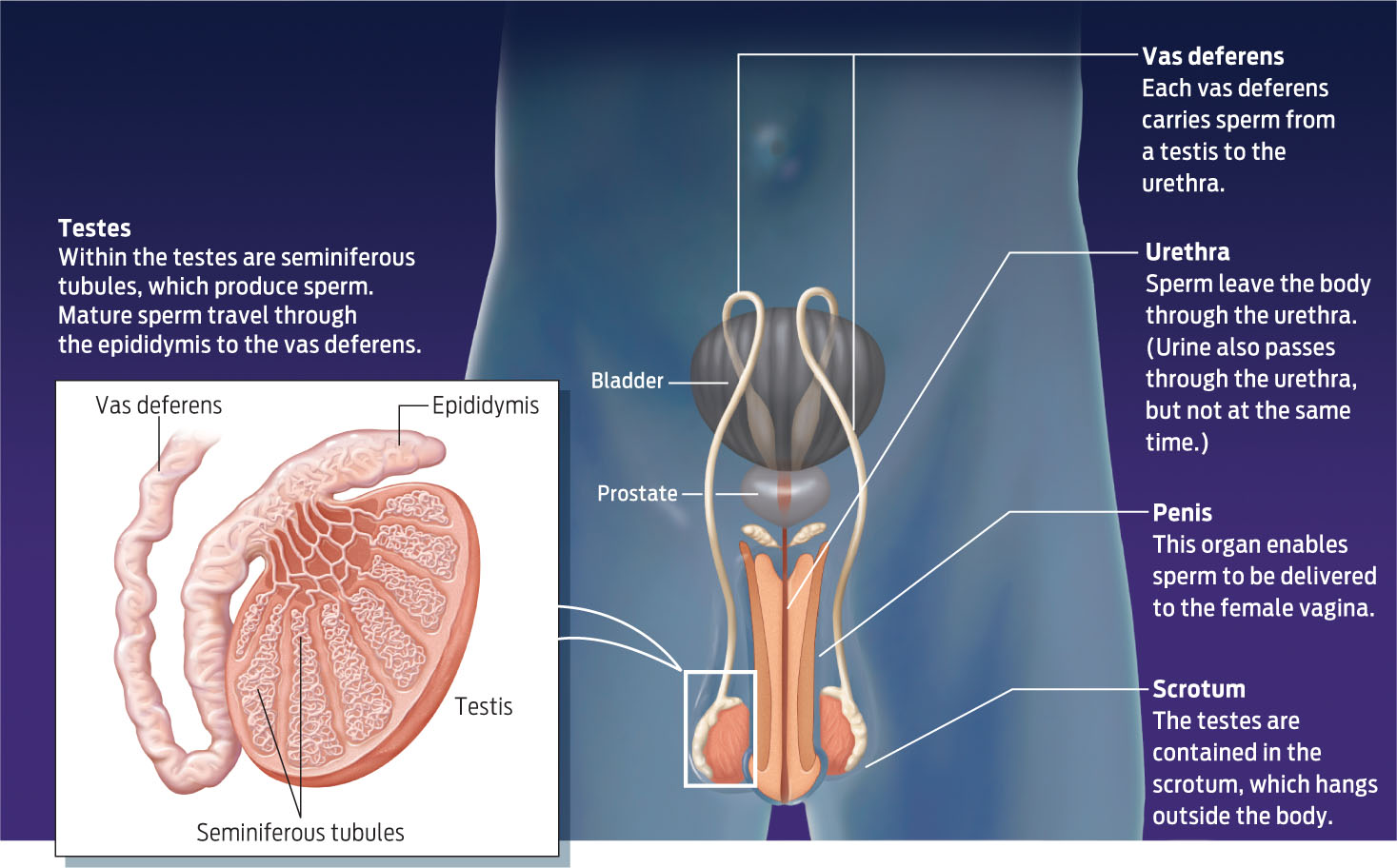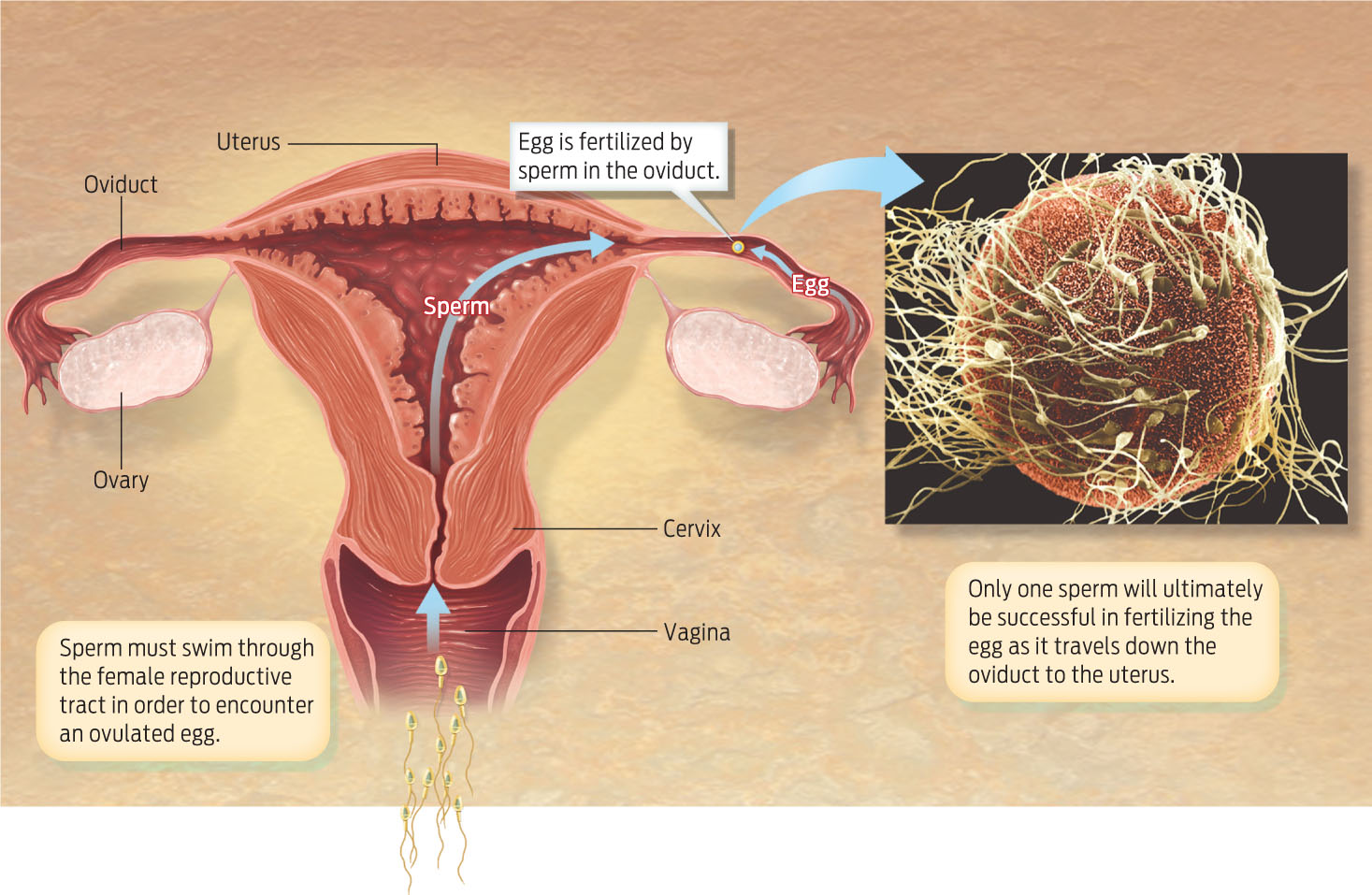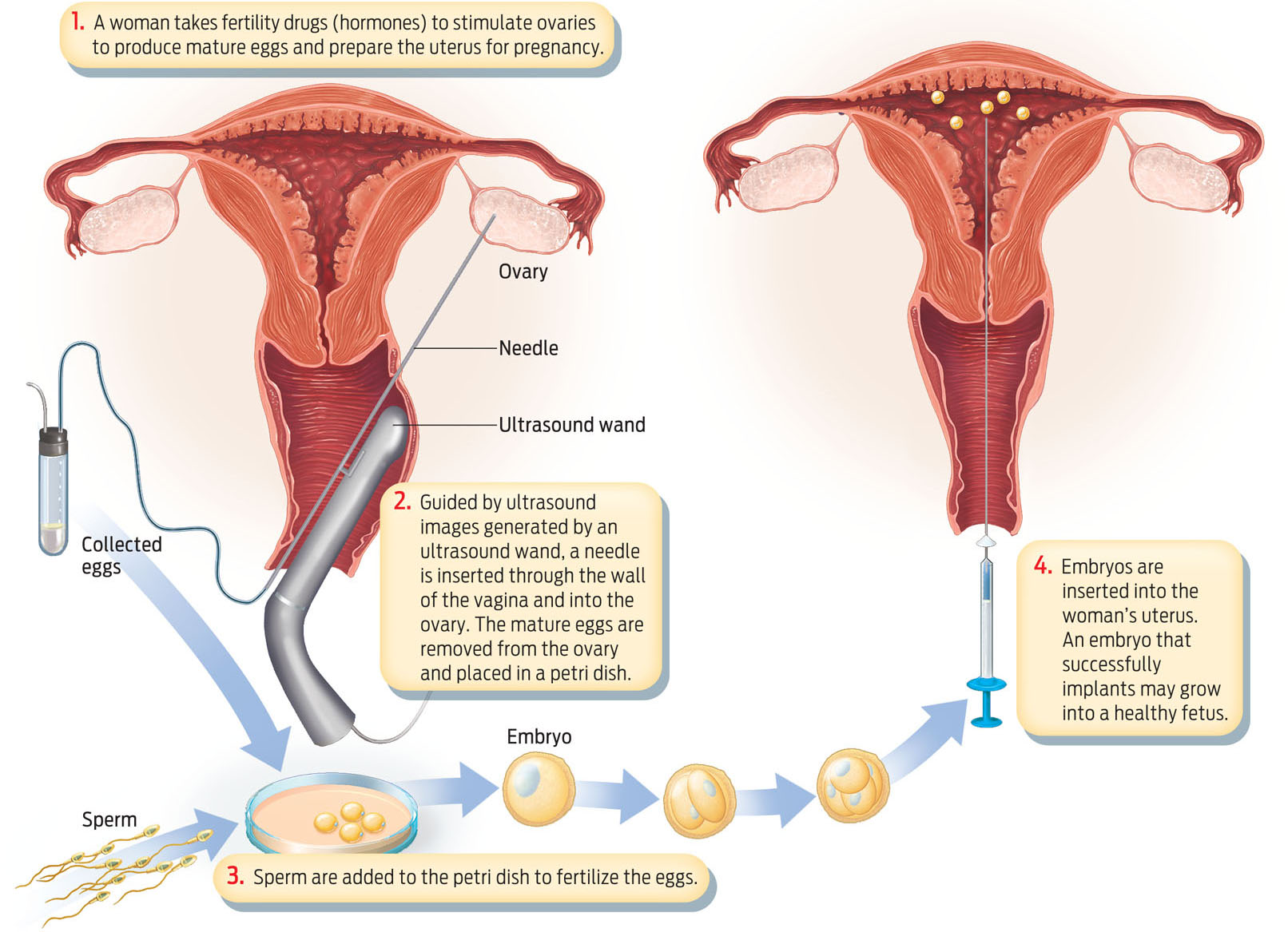FERTILITY AND INFERTILITY
Suleman, who grew up as an only child, said she had always wanted a large family to help make up for her lonely childhood. She told Ann Curry on NBC’s Today show in 2009, after the octuplets were born, that she had tried to become pregnant for several years but had been unable to. That’s when she turned to a fertility doctor for help.

Suleman claimed she suffered from a medical condition that prevented her from conceiving a child naturally. If she did, she wasn’t alone. In the United States, an estimated one out of eight couples—about 7.3 million women and their partners—experience infertility, which is defined as the inability to conceive within a year or to bring a pregnancy to term. Many things can cause infertility: advanced age, infections, hormonal imbalances, chromosomal abnormalities, and physical blockage of reproductive passages. Men can suffer from a low sperm count or have abnormal sperm. In many cases, the reason for a couple’s infertility remains unknown, and most couples are unaware that they have a fertility problem until they begin trying to conceive a child and can’t.
OVARIES Paired female reproductive organs; the ovaries contain eggs and produce estrogen and progesterone.
According to the ASRM, modern medicine can offer treatment to 90% of infertile couples. But fertility isn’t an exact science, and treatment isn’t always effective. There are many organs and hormones involved in human reproduction, and communication among them is a highly orchestrated process; even under the best circumstances, successful pregnancies require a bit of lucky timing.
ESTROGEN A female sex hormone produced by the ovaries.
The female reproductive system consists of the ovaries and accessory structures that facilitate fertilization and pregnancy. The ovaries contain eggs and produce the sex hormones estrogen and progesterone, the major female sex hormones. Each month, one ovary typically releases one egg into an adjacent organ called the oviduct (also known as the fallopian tube). The egg travels via an oviduct to the uterus, an elastic muscular compartment where a fetus may develop should an egg be fertilized by sperm. The tissue that lines the uterus is called the endometrium, which becomes enriched with blood vessels to support a potential pregnancy (INFOGRAPHIC 30.1).
PROGESTERONE A female sex hormone produced by endocrine cells in the ovaries (particularly in the cells of the corpus luteum) that prepares and maintains the uterus for pregnancy.
OVIDUCT The tube connecting an ovary and the uterus in females. Eggs are ovulated into and fertilized within the oviducts.
UTERUS The muscular organ in females in which a fetus develops.
ENDOMETRIUM The lining of the uterus.
The female reproductive system consists of the ovaries and accessory reproductive structures. The ovaries produce eggs and hormones. Accessory structures facilitate fertilization and pregnancy.

TESTES (SINGULAR: TESTIS) Paired male reproductive organs, which contain sperm and produce androgens (primarily testosterone).
SCROTUM The sac in which the testes are held.
In males, paired glands called testes (or testicles) produce sperm. The testes are contained in a sac of skin called the scrotum that hangs outside the body (an arrangement that keeps the testes slightly cooler than body temperature, ensuring proper sperm development). The testes produce testosterone, the primary male sex hormone. Testosterone is one of the androgens—a class of hormones that are present in higher amounts in males than in females. Each testis contains tightly coiled seminiferous tubules within which sperm develop. Remarkably, each testis contains approximately 250 meters of seminiferous tubules. Sperm travel through the seminiferous tubules and enter the epididymis where they mature and are stored until ejaculated. From the epididymis, sperm travel through paired tubes called the vas deferens and exit the body through the urethra. Along the way, the prostate and other glands add fluid to sperm that helps the sperm survive in the female reproductive tract. The fluid contains the sugar fructose as an energy source, alkaline bases that help buffer the acidic pH in the vagina and protect the sperm DNA from being damaged, and mucus that helps keep the sperm mobile in the female reproductive tract. Ejaculated sperm and the accompanying fluid are called semen (INFOGRAPHIC 30.2).
TESTOSTERONE The primary male sex hormone, which stimulates the development of masculine features and plays a key role in sperm development.
ANDROGEN A class of sex hormones, including testosterone, that is present in higher levels in men than in women and causes male-associated traits like deep voice, growth of facial hair, and defined musculature.
SEMINIFEROUS TUBULES Coiled structures that constitute the bulk of the testes and in which sperm develop.
EPIDIDYMIS Tubes in which sperm mature and are stored before ejaculation.
VAS DEFERENS Paired tubes that carry sperm from the testes to the urethra.
URETHRA A tube that connects the bladder to the genitals and carries urine out of the body. In males, the urethra travels through the penis and also carries sperm.
SEMEN The mixture of fluid and sperm that is ejaculated from the penis.
Paired testes produce sperm and hormones. Sperm travel through a series of ducts and are ejaculated through the urethra.

VAGINA The first part of the female reproductive tract, extending up to the cervix; also known as the birth canal.
CERVIX The opening or “neck” of the uterus, where sperm enter and babies exit.
During sex, when a man ejaculates into a woman’s vagina, sperm swim up the reproductive tract, through the opening of the uterus, called the cervix (so called from the Latin word for “neck”), and into the oviducts. The oviducts are where fertilization—the fusion of egg and sperm—occurs. Only a single sperm will be successful in fertilizing an egg (INFOGRAPHIC 30.3).
FERTILIZATION The fusion of an egg and a sperm.
During intercourse, sperm ejaculated from the penis enters the female reproductive tract. Sperm must swim through the tract into the oviducts to fertilize an ovulated egg. While many sperm may make it to an oviduct, only one will actually fertilize an egg. Blockages in the female reproductive tract can impede sperm passage to an egg, and consequently compromise fertilization.

IN VITRO FERTILIZATION (IVF) A form of assisted reproduction in which eggs and sperm are brought together outside the body and the resulting embryos are inserted into a woman’s uterus.
That’s the way normal conception happens—but several things can go wrong along the way. Physical damage to the reproductive organs can prevent fertilization. In some cases, a woman’s oviducts can be blocked or damaged, preventing eggs from entering the uterus or sperm from getting into the oviduct, where fertilization normally takes place. The most common cause of blocked tubes is pelvic inflammatory disease, which can be caused by sexually transmitted diseases such as chlamydia, a bacterial infection. An untreated infection can cause scar tissue to build up in the oviducts and block them. In interviews, Suleman has said that she suffered from fibroids—benign tumors that grow in muscle—that left her oviducts scarred. In men, any obstructions in the vas deferens or epididymis will block sperm transport. Varicose veins in the testicles and sexually transmitted bacterial infections such as chlamydia or gonorrhea can also cause blocked tubes.
EMBRYO An early stage of development, an embryo forms when a zygote undergoes cell division.
Fertility specialists can test for physical blockages and, in some cases, surgically correct them. When surgery isn’t an option, in vitro fertilization (IVF) is often recommended. In IVF, hormones are administered to a woman to promote egg development, and then eggs are extracted from her ovaries through a needle inserted through the vagina. Sperm are extracted from ejaculate or, in cases of physical blockage, from the epididymis. The sperm and eggs are combined outside the body in a petri dish to allow the sperm to fertilize the eggs. The fertilized eggs begin to divide and the resulting embryos are then inserted into the woman’s uterus in hope that at least one will develop into a fetus. IVF has been used to help infertile couples conceive children since 1978, when Louise Brown, the first “test-tube baby” conceived with IVF, was born (INFOGRAPHIC 30.4).
In vitro fertilization involves extracting eggs and sperm and mixing them together outside the body to allow fertilization. The resulting embryos are then inserted back into a woman’s uterus in hope that at least one of them will implant into the uterus and grow into a fetus.

IVF may also be recommended in cases of low sperm number, abnormal sperm, and even in cases in which the cause of infertility can’t be determined. In such cases the term “infertility” can actually be a misnomer. Many couples with defective sperm or unexplained infertility can still conceive a child naturally—it just may take longer. But because no one can predict how long it might take to achieve a successful pregnancy and because fertility decreases with age, IVF makes conception more likely by bringing sperm and egg together artificially.